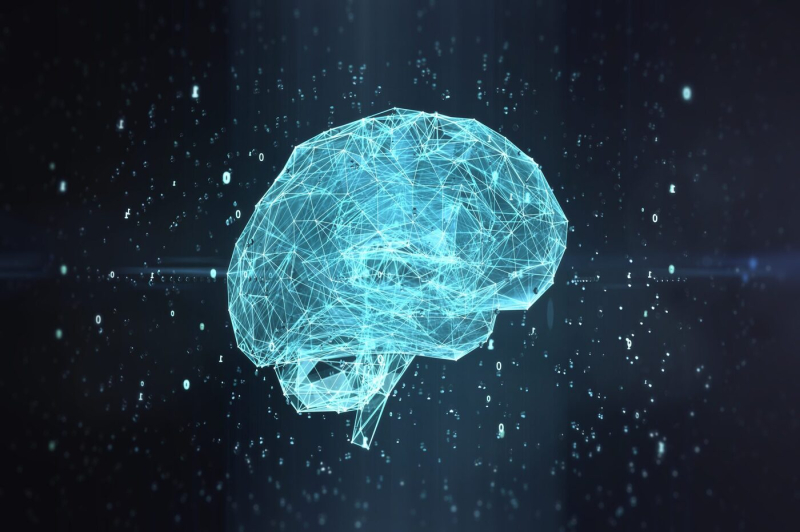
© Adobe Stock
The company Neuralink was founded by Elon Musk in 2016 and it has an extremely ambitious project: merge the human brain with the # 8217;artificial intelligence. To achieve what is in reality the transhumanist dream par excellence, she developed a brain-machine interface, called BCI (for Brain Computer Interface). Although it is not the first company to develop this type of technology (others, like BrainGate, were there before), Neuralink stands out for its rather unique approach. Indeed, the idea is to significantly improve the resolution and capacity of the interfaces and above all to apply them to the general public.
This technology is based on a very sophisticated chip and electrodes, directly implemented in the brainin order to connect it to an external device. After testing this device on animals, not without mistreatment, the American health authorities gave authorization in 2023 to the company to test its implants on humans. On January 28, 2024, Musk announced on X.com the first successful placement of an implant on a patient.
The cutting-edge technology behind Neuralink
The device developed by Neuralink is based on a network of electrodes, as thin as hair, inserted into the brain. These are flexible – they can move and bend with the movements of the brain – and biocompatible, this means that the material from which they are made is accepted by the&# 8217;organism: no toxic reactions or negative immune response.
These electrodes are capable of reading neuronal signals with very high fidelity. They capture the electrical activity of the brain very precisely, which streamlines communication between the brain and the electronic devices that can subsequently be connected to it.
To implant the electrodes, Neuralink uses a robot controlled by a surgeon. To begin, an incision is made in the scalp and a hole is pierced in the skull. It is through this orifice that the robot will then place the electrodes. Obviously, the surgeon does not operate visually, and is entirely guided by high-resolution imaging. A method which therefore allows him to visualize the internal structures of the brain in 3D so as not to cause damage to organic tissues during the operation.
When the electrodes are placed, they are subsequently connected to a small device, placed behind the ear, which will subsequently transmit the signals between the electrode network and another device: electronic prosthesis, computer or smartphones.
The N1 chip, the heart of Neuralink innovation
It is the keystone of the Neuralink system: the N1 chip. Without it, neural signals could not be interpreted and the accuracy of the BCI system would be infinitely lower. It should be seen as a kind of bridge between the human brain and the machine, a translator in short.
It is of course entirely custom designed and turns out to be a little masterpiece of miniaturization. Like a computer processor (CPU), it is capable of processing a vast amount of data in real time. This data comes from electrodes that capture electrical impulses generated by neuronal activity.
Able to manage up to 10,000 neural channels simultaneously, it uses very advanced algorithms to analyze this set of data, filter them, and then convert them into commands or information that will be used to control external devices . Its power therefore allows a very fluid and completely new interaction between man and machine.
For the implanted patient, this means that they benefit from very precise feedback. For example, this could allow him to control a prosthesis much more easily or even improve his cognitive abilities.
Future horizons: what applications are imaginable ?
The primary goal of Neuralink (and BCIs in general) is to improve the lives of patients < strong>suffering from neurological disorders. Let's take the example of a person who is paralyzed following a spinal cord injury. This lesion prevents his brain from communicating properly with certain parts of his body.
If the patient benefits from a BCI interface like Neuralink, the electrodes would be able to capture neural signals when the patient thinkto move. These signals would then be transmitted to the N1 chip, which would then translate them into movement intentions. These intentions are then sent in the form of signals to external devices that would help the patient in their daily life: computer for text entry or even a robotic prosthesis.
Cognitive enhancement is also another possible application of Neuralink, and perhaps the one that poses the most ethical problems. It is no longer a question here of repairing an organism, but of increasing its capabilities by connecting, for example, the human brain to a computer. A connection that could increase the brain's processing power, improve its memory or make it integrate information directly via the machine.
The BCI interface developed by Neuralink is not just a simple chip, let alone an additional treatment for neurological diseases. It’s an innovation that could radically change the human race by breaking down the existing barriers between the brain of’ homo sapiens and the machine. It’s a technological evolution, but also a societal one. Today we can easily imagine a more or less near future, where an ideological gap will widen between the people for and the people against the very existence of this type of device. A dystopian landscape, where only one valid question will remain: does transhumanism aim to improve human beings? human or to replace it ?
- The device developed by Neuralink is a BCI, based on a network of electrodes introduced into the brain.
- These electrodes capture neuronal activity , and transmit these signals to a processing chip, the N1.
- The possible applications are numerous: treatment of incurable neurological diseases or increasing the cognitive abilities of the patient. ;#8217;man.
📍 To not miss any news from Presse-citron, follow us on Google News and WhatsApp.
[ ]

